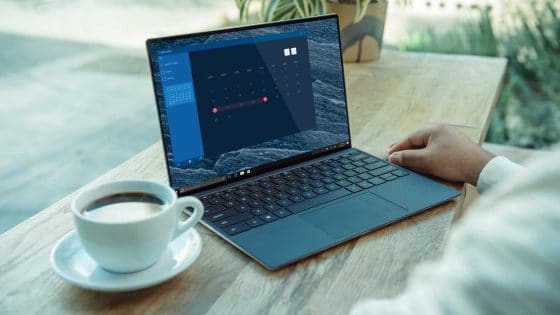By Deridian Nurhalim
The e-commerce industry in the six largest Southeast Asian markets is set to continue growing as it will likely reach US$172 billion in value in 2025, according to Google, Temasek, and Bain company.
iPrice Group, an e-commerce aggregator, collaborated with AppsFlyer and SimilarWeb to discover the impact of Covid-19 in their Map of E-commerce Yearend Report 2020. The report uncovered 3 major changes such as:
- Which E-commerce Sites Gained Their Web visits?
- Southeast Asians’ Average Spending Increased by 19%
- What Drives Southeast Asians to Install & Uninstall Shopping Apps?
Specifically, in Indonesia, Singapore, Malaysia, Vietnam, Thailand, and the Philippines.
Which E-commerce Sites Gained Their Web Visits?
2020 has signified strong customer confidence in e-commerce retail despite mobility restrictions and mounting concerns over the global pandemic.
The report reveals that the overall website traffic of online shopping platforms increased positively across all countries year-over-year. This can be seen most in Singapore, which experienced a surge of 35% compared to 2019, followed by the Philippines (21%), Vietnam (19%), Malaysia (17%), Thailand (15%), and Indonesia (6%).
Data also showed that online department stores’ web traffic experienced a 52% average increase from Q1 of 2020. This could be a tell-tale sign that most countries in the region flocked to online department stores instead of physical stores due to social distancing.
Nonetheless, some e-commerce sites’ web traffic has taken a beating due to the pandemic. For instance, platforms that offer cosmetic products showed an average web traffic decrease of 35% from Q1 to Q4 2020. Meanwhile, fashion and electronics sites also experienced a slight decrease of 14% in traffic in the 6 aforementioned countries.
Whilst demand for essential goods is necessary, Covid-19 has broadened the online demand of Southeast Asian consumers for non-essential items such as fashion, electronics, health & beauty, and sports & outdoors that were seen through online spending instead.
Southeast Asians’ Average Spending Increased by 19%
Although fashion and electronics sites saw a slight decrease in web traffic, the average basket size for these categories significantly increased. Sports & outdoor products met the same fate as well (see page 12).
iPrice Group’s platform found that consumers in Southeast Asia spent an overall average of USD32 per order in 2020, which was 19% higher than 2019’s. Singapore and Malaysia saw the highest average basket size of USD61 and USD41 respectively in 2020.
These unprecedented shifts have presented a sign of digital acceleration in online retail despite the global pandemic that is affecting consumers in Southeast Asia.
What Drives Southeast Asians to Install & Uninstall Shopping Apps?
As most people were embracing technology in response to a volatile and uncertain situation, there is a prime opportunity for mobile shopping apps to continuously engage with Southeast Asian consumers.
That said, AppsFlyer (the global leader in mobile attribution & marketing analytics) & iPrice analysed over 12.4 million installs and found that there was a 2% average increase of organic installs on iOS & Android shopping applications from January to June (see page 6).
Among many things that led to users installing shopping applications were lockdown periods and online sales.
For instance, with lockdown measures were imposed in Indonesia, Malaysia, and Singapore, people embarked to install and tried different shopping apps between March until April. This also coincided with various online sales events such as Ramadhan, while people were being trapped indoors.
Meanwhile, the Lunar New Year and Songkran festival also showed a surge of installations in Vietnam and Thailand from January to February.
Major e-commerce companies across the region have also rolled out other marketing campaigns that drew customers through gamified features on the app, free shipping, and discounts. For instance, superstars such as K-pop group Blackpink, actor Lee Min-ho, footballer Cristiano Ronaldo, Singapore’s e-commerce ambassador’s Phua Chu Kang, and others.
The success of organic installs has not gone unnoticed as the study also recognised 6 out of 10 SEA users are still using mobile shopping apps as their primary channel.
However, data reported that there was an increasing rate of uninstallation in 5 countries. The highest average uninstallation was led by Vietnam, Indonesia, Malaysia, Thailand, and Singapore with an increase of 49%, 47%, 41%, 37%, and 36% respectively (see page 7).
This proves Southeast Asian users are more selective of shopping apps by uninstalling apps they don’t use as the pandemic continues on. The Covid-19 pandemic will provide further impetus for growth as shopping behaviour will continually shift. It remains imperative for most e-commerce companies to strengthen their relationship with consumers through relevant campaigns.
For more, visit the official study
Map-of-E-commerce-2020-Year-End-Report-iPrice-GroupDeridian Nurhalim is the Content Marketing Executive at iPrice
iPrice curates highly insightful data that are unique and unbiased in the world of tech, e-commerce, and online retail by providing data-rich, interactive, and media-specific targeted content that varies from the latest tech trends to the top e-players in Southeast Asia. They also provide high-quality country-specific insights and data on seven markets, namely Singapore, Hong Kong, Vietnam, Thailand, Indonesia, Malaysia, and the Philippines. Through collaborations with data partners such as App Annie Intelligence, SimilarWeb, and Parcel Perform, iPrice has been featured on numerous prominent publications including South China Morning Post, Bloomberg, Motley Fool, Nasdaq, IGN, and Tech Crunch, to name a few.



















